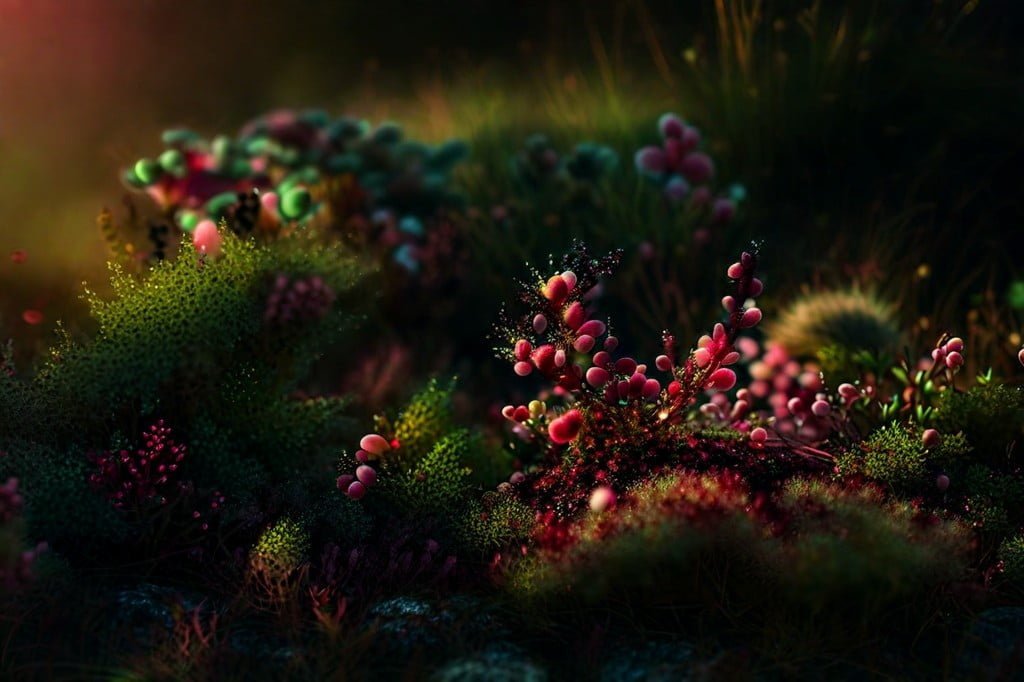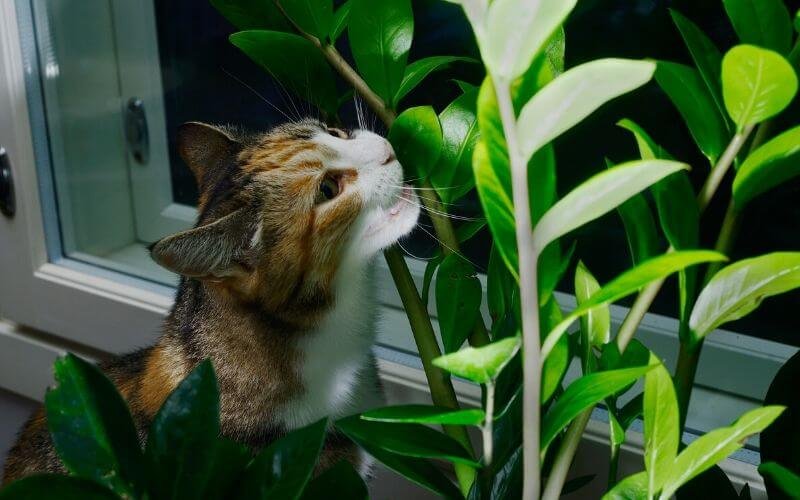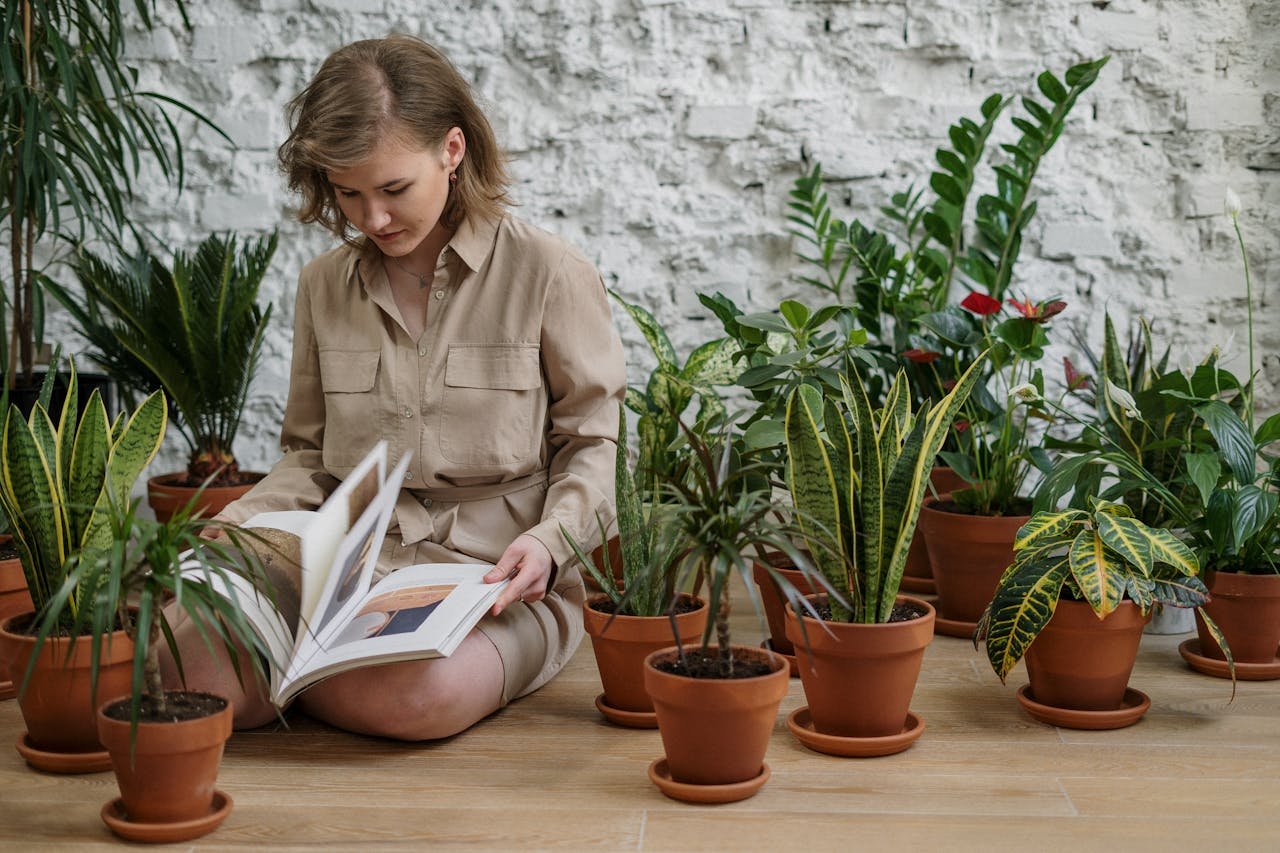Introduction how to diagnose plant problems
When it comes to caring for plants, it’s essential to be aware of common problems that can arise. Understanding these issues and knowing how to solve them will help you maintain healthy and thriving plants. In this article, I will discuss the top 5 common plant problems that many gardeners face and provide valuable solutions to effectively address each issue. By identifying these problems early on and taking proactive steps to remedy them, you can ensure that your plants continue to flourish and bring beauty to your indoor or outdoor space. Let’s delve into these common plant problems and discover how to solve them effortlessly.
Identifying Common Plant Problems
When it comes to caring for plants, it’s essential to be able to identify common problems that may arise. Here are some key issues to look out for:
Yellowing Leaves: If I notice that the leaves of my plant are turning yellow, it could be a sign of overwatering, nutrient deficiency, or pests such as spider mites. Adjusting my watering schedule, fertilizing the plant, or treating for pests can help resolve this issue.
Wilting: Wilting can be caused by underwatering, overwatering, root rot, or even environmental stress. Checking the soil moisture level, adjusting my watering habits, and ensuring proper drainage can help revive a wilting plant.
Leaf Spots: If I see spots or discoloration on the leaves of my plant, it might be due to fungal or bacterial infections. Removing affected leaves, improving air circulation, and avoiding overhead watering can prevent the spread of diseases.
Stunted Growth: Stunted growth in plants can be a result of poor lighting, incorrect temperatures, lack of nutrients, or root-bound conditions. Moving the plant to a brighter location, providing appropriate temperatures, fertilizing, or repotting can help stimulate growth.
Leaf Curling: Curling leaves can be a sign of underwatering, overfertilizing, pests like aphids, or even herbicide damage. Adjusting my watering routine, avoiding excessive fertilization, treating for pests, or identifying any chemical exposure can help the plant recover.
By being observant and understanding these common plant problems, I can take the necessary steps to address issues promptly and ensure the health and vitality of my plants.
Overwatering and Underwatering
When it comes to caring for plants, one of the most common issues I encounter is overwatering or underwatering. Both of these problems can have detrimental effects on plant health, so it’s crucial to strike the right balance.
- Overwatering:
- Signs: Yellowing leaves, wilting, mushy stems, and moldy soil are common signs of overwatering.
- Solution: If I suspect overwatering, I should allow the soil to dry out before watering again. It’s essential to feel the soil’s moisture level before watering and ensure proper drainage in the pot.
- Underwatering:
- Signs: Drying and browning of leaf tips, drooping leaves, and dry soil are signs that my plant may be underwatered.
- Solution: To combat underwatering, I need to establish a consistent watering schedule based on each plant’s specific needs. I should water thoroughly when the top inch of soil is dry.
- Remember, each plant has its watering requirements, so it’s essential to research and understand the needs of each plant in my care. Monitoring the plant regularly for signs of overwatering or underwatering can help me address these issues promptly. By maintaining the right balance of water, I can promote healthier growth and prevent common plant problems related to water stress.
Pests and Diseases
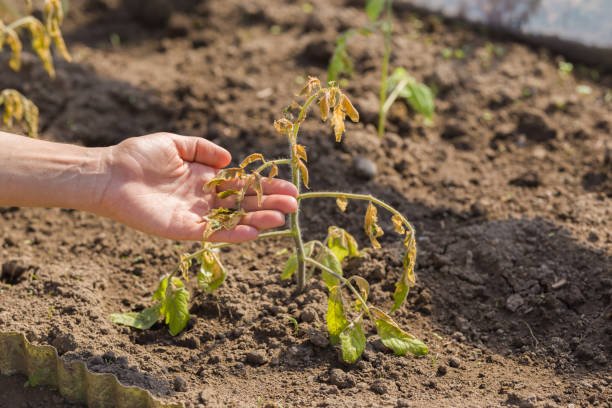
Dealing with pests and diseases is one of the most frustrating challenges for plant owners. Here are the top 5 common problems caused by pests and diseases and how to address them:
Aphids: Aphids are tiny insects that feed on plant sap, causing leaves to yellow and curl. To get rid of aphids, I recommend spraying the plant with a mixture of water and dish soap. Additionally, introducing natural predators like ladybugs can help control aphid populations.
Fungal Diseases: Fungal diseases like powdery mildew and leaf spot are common issues that can affect plants. To treat fungal diseases, I suggest removing affected plant parts, improving air circulation around the plant, and avoiding overhead watering. Applying fungicides can also help prevent the spread of fungal infections.
Spider Mites: These tiny pests can cause leaves to become speckled and stippled. To combat spider mites, I recommend regularly showering plants with a strong blast of water to dislodge the pests. Introducing predatory mites can also help keep spider mite populations in check.
Root Rot: Root rot is a fungal disease that can be caused by overwatering or poorly draining soil. If I notice signs of root rot such as wilting leaves and mushy roots, I recommend adjusting my watering routine and repotting the plant in well-draining soil. Trimming affected roots can also help promote healthy growth.
Scale Insects: Scale insects are small, oval pests that can be found on plant stems and leaves. To address a scale infestation, I advise scrubbing the affected areas with a soft brush and soapy water. Pruning heavily infested areas and applying horticultural oil can also help control scale populations.
Being vigilant and addressing pest and disease issues promptly can help maintain the health and vitality of my plants. By following these tips, I can effectively manage common plant problems related to pests and diseases.
Growing Olive tree indoor plant
Nutrient Deficiency
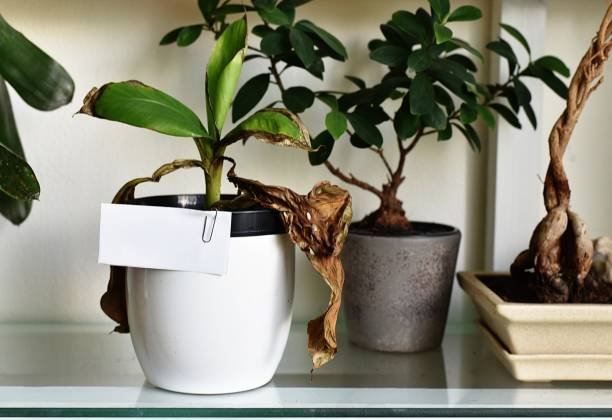
I have noticed that sometimes my plants don’t seem as healthy as they should be, and this could be due to nutrient deficiency. If you observe any of these signs in your plants, they might be suffering from nutrient deficiency:
- Yellowing Leaves: When I see yellowing leaves with green veins on my plants, it usually indicates a nitrogen deficiency.
- Stunted Growth: If my plants are not growing as quickly as they should, it could be a sign of a lack of phosphorus in the soil.
- Poor Fruit Development: When the fruits on my plants are undersized or slow to develop, it might be because of a potassium deficiency.
- Leaf Tip Browning: Browning at the tips of the leaves of my plants could mean there is a calcium deficiency.
- Purple Hues: If I notice a purple tint on the leaves of my plants, it could signify a phosphorus deficiency.
- To address nutrient deficiencies in my plants, I make sure to:
- Test the Soil: I regularly test the soil to determine which nutrients are lacking.
- Choose the Right Fertilizer: Based on the soil test results, I select a fertilizer that will replenish the missing nutrients.
- Adjust pH Levels: Sometimes, adjusting the pH levels of the soil can help improve nutrient uptake by the plants.
- Consider Foliar Feeding: In severe cases of nutrient deficiency, I use foliar feeding as a quick way to provide nutrients directly to the plants’ leaves.
- By being proactive about addressing nutrient deficiencies in my plants, I can help them thrive and grow to their full potential.
Improper Lighting Conditions
I cannot stress enough how crucial proper lighting is for plants. If you notice your plants looking lackluster, pale, or even droopy, it might be due to improper lighting conditions. Here’s how to tackle this common problem:
Assess the Lighting: Take a moment to observe the light conditions in the area where your plant is located. Is it getting enough sunlight? Is it direct or indirect light? Different plants have varying light requirements, so knowing what your plant needs is key.
Adjust Placement: If you find that your plant is not receiving adequate light, consider moving it to a different spot. Plants that require a lot of sunlight should be placed near a south-facing window, while those that prefer indirect light can thrive in east or west-facing windows.
Supplement with Grow Lights: If natural light is scarce in your living space, investing in grow lights can make a world of difference. LED grow lights are energy-efficient and can provide the right spectrum of light for your plants to flourish.
Rotate Regularly: To ensure even growth on all sides of the plant, rotate it regularly. This practice promotes balanced exposure to light, preventing one side from becoming leggy or unhealthy.
Monitor Light Duration: Just like us, plants need their rest too. Make sure your plants are not exposed to light 24/7. Providing a period of darkness is essential for their growth and development.
By addressing improper lighting conditions promptly, you can set your plants on the path to thriving.
Improper Temperature and Humidity Levels
I find that one of the most common problems that can affect my plants is improper temperature and humidity levels. Here are some tips on how to address this issue:
Temperature fluctuations: Drastic temperature changes can stress plants. Make sure to keep your plants away from drafty windows, heaters, or air conditioning units. I always try to maintain a consistent temperature in the room where my plants are located.
Extreme temperatures: Some plants are sensitive to extreme heat or cold. If you notice your plant looking droopy or withering, check if it’s too close to a heat source or if it’s in a drafty area. Move it to a more suitable location to help it recover.
Humidity levels: Plants have different humidity requirements. If you notice crispy leaf edges or yellowing leaves, it could be a sign of low humidity. To increase humidity, I place a tray of water near my plants or use a humidifier. On the other hand, if you see mold or mildew on your plant’s soil or leaves, it might be a sign of excessive humidity. In that case, improve air circulation around the plant and avoid overwatering.
Seasonal changes: Remember that temperature and humidity fluctuate throughout the year. Some plants may require more moisture in the summer and less in the winter. Be mindful of the seasonal changes and adjust your watering and misting routines accordingly.
Monitor your plants: Investing in a thermometer and a humidity gauge can help you keep track of the environment around your plants. By regularly monitoring these levels, you can quickly identify any issues and take corrective actions before they harm your plants.
Maintaining proper temperature and humidity levels is crucial for the health and vitality of your plants. By being attentive to these factors, you can create a more conducive environment for your plants to thrive.
Poor Soil Quality
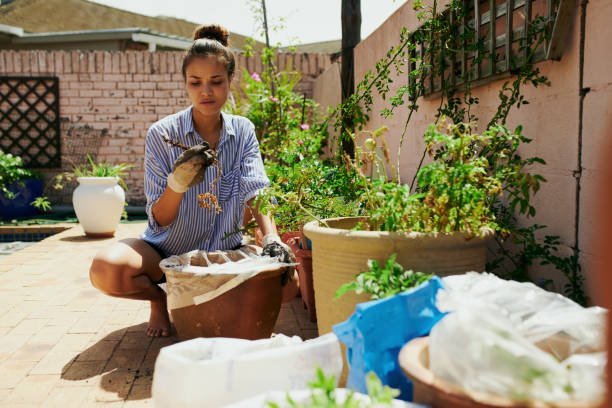
When plants struggle to thrive, poor soil quality is often a key culprit. My plants may not be receiving the nutrients they need due to various soil-related issues. Here are some signs that I may be dealing with poor soil quality:
- Stunted growth or yellowing leaves
- Difficulty in absorbing water
- Poor drainage leading to waterlogged roots
- To address poor soil quality, I should consider the following solutions:
Soil Testing: Conduct a soil test to determine its pH level and nutrient content. This will help me understand what amendments are needed.
Amending the Soil: Based on the soil test results, I can add organic matter like compost to improve soil structure and nutrient levels.
Mulching: Applying mulch can help retain moisture, regulate soil temperature, and improve overall soil quality over time as it breaks down.
Choosing the Right Plants: Selecting plants that are well-suited to the existing soil conditions can help mitigate the impact of poor soil quality.
Raised Beds or Containers: If improving the existing soil is challenging, I can opt for raised beds or containers filled with quality potting mix for better plant growth.
By addressing poor soil quality through proper testing and amending, I can create a healthier environment for my plants to thrive and flourish.
Ensuring Proper Plant Care Practices
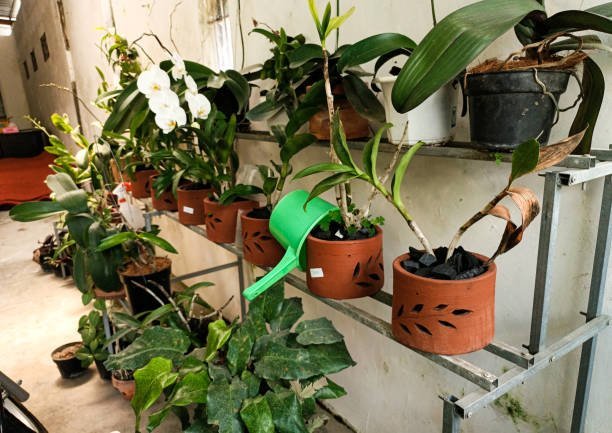
I have found that maintaining proper plant care practices is crucial to prevent common plant problems. Here are some tips to ensure your plants thrive:
Watering: Overwatering or underwatering can lead to issues like root rot or wilting. I recommend checking the soil moisture before watering and adjusting based on plant needs.
Light: Insufficient or excessive light can cause stunted growth or yellowing leaves. Be sure to place plants in appropriate light conditions based on their specific requirements.
Nutrients: Plants need essential nutrients to grow healthy. Consider using a balanced fertilizer to provide them with the necessary nutrients for growth and development.
Proper plant care practices involve regular monitoring of watering, light exposure, and nutrient levels to ensure optimal plant health.
Pests and Diseases: Regularly inspect your plants for signs of pests or diseases. If detected, take prompt action to address the issue through natural remedies or, if necessary, appropriate treatments.
Pruning and Maintenance: Regular pruning promotes healthy growth and helps prevent overcrowding. Additionally, removing dead or damaged foliage can prevent the spread of diseases.
By following these proper plant care practices, you can significantly reduce the risk of common plant problems and promote the overall health and vitality of your green companions.
Conclusion how to diagnose plant problems
I have outlined the top 5 common plant problems and provided effective solutions for each. By addressing issues like overwatering, poor lighting, pests, nutrient deficiencies, and improper pruning, you can help your plants thrive. Remember to monitor your plants closely, adjust care routines as needed, and seek help from gardening resources if you encounter persistent problems. With proper attention and care, you can enjoy healthy and vibrant plants in your indoor or outdoor space. Happy gardening!

